Asiatic or garden buttercup: description, planting and care
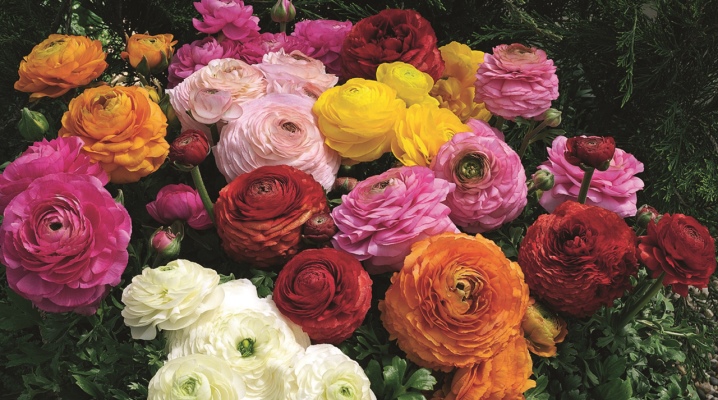
Buttercups are extremely common plants, they can be found in any part of the world, even in regions with difficult climatic conditions: in the western part of Siberia, in the highlands of the Alps, and some varieties can grow even in the northern hemisphere. Buttercup species diversity is extremely numerous. For its growth, the plant prefers well-moistened and illuminated areas: forests, meadows and meadows, as well as the banks of rivers and lakes.
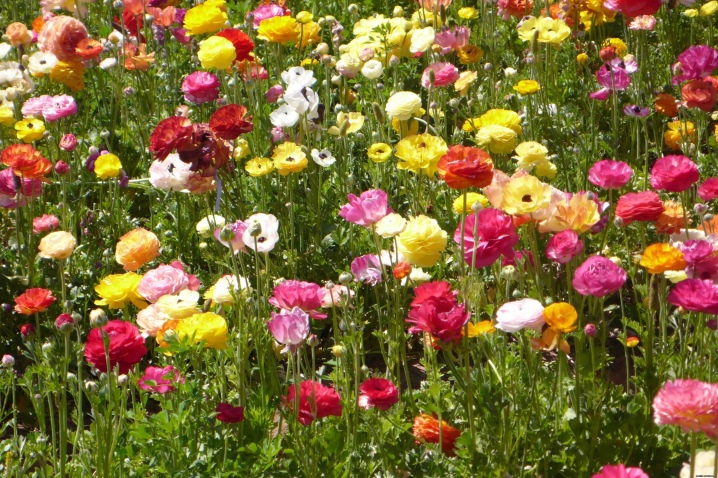
Peculiarities
The founder of all hybrids and varieties that exist today is considered to be a garden buttercup or an Asian buttercup, aka ranunculus.
It is attributed to herbaceous perennial plants, although some growers perceive the flower as an annual because of the difficulties in storing tubers.
It has a varied color palette - the buds can be snow-white, red, pink, yellow, crimson, and also have two-color inflorescences.

The buds can have a different shape, which depends on the variety and resembles flowers:
half-open roses;
dahlia;
spherical chrysanthemums;
terry peonies;
poppies.

Buttercups do not have a pronounced aroma, therefore they do not cause allergic reactions and are often used for cutting into bouquets. The stem of the plant has weakly branching properties, reaching a height of 30-50 cm, although the plant can grow above 65 cm. The ground part of buttercups is pubescent, the leaf plates are tripartite. The size of the flowers ranges from 4 to 10 cm, depending on the variety.
The flowering period of ranunculus is not very long and falls in June, but if favorable conditions are created for the flower, it can bloom until August.

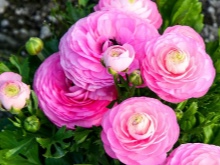

Tuberous rhizome, consisting of several elongated parts.
When working with a flower, you need to be careful, as it is poisonous.
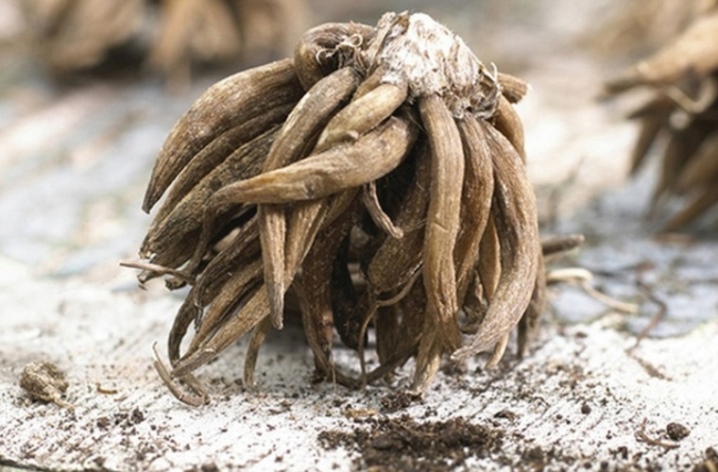
As confirmation of the prevalence and popularity of the plant, its many popular names serve:
Adonis;
night blindness;
fierce color.

The flower received such not very attractive names because of its poisonous properties - it can cause a runny nose, allergic reactions, and at high concentrations, even spasms of the larynx. But apart from that, the plant is also used for medicinal purposes in the treatment of scabies, rheumatism, scrofula and tuberculous skin disease.

Popular varieties
The appearance of ranunculus has quite a few options, but the plants are divided into several groups according to the shape of the inflorescences:
asian according to the description, they are similar to multi-colored roses, they are distinguished by high thermophilicity, although some hybrids are quite capable of growing in a rather cold climate;
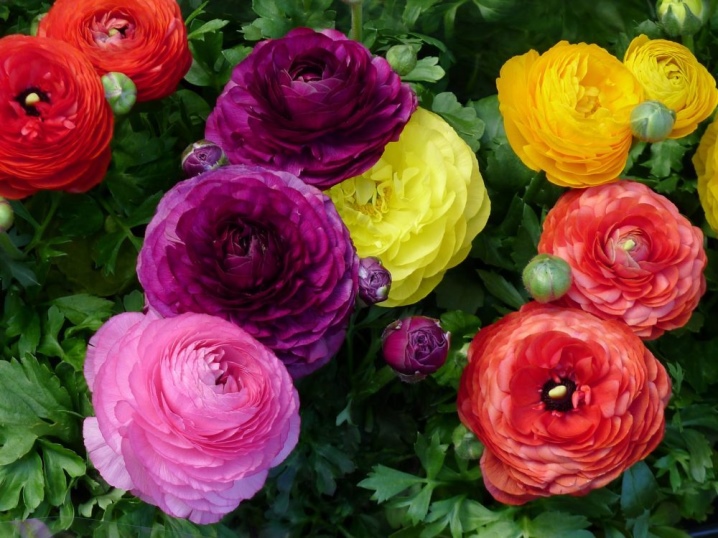
- turban or African with large spherical flowers that have a dense double shape;

- persian have simple or semi-double buds of small size, peduncles are also low;
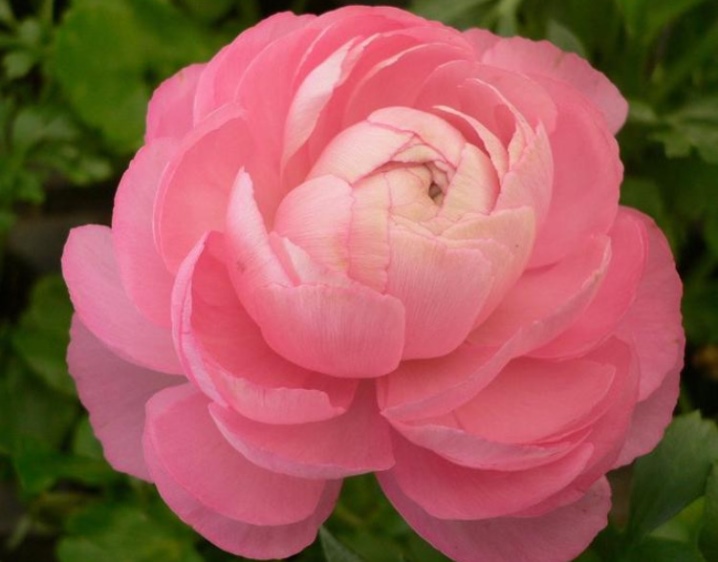
- french have semi-double flowers, the petals are arranged in two rows;
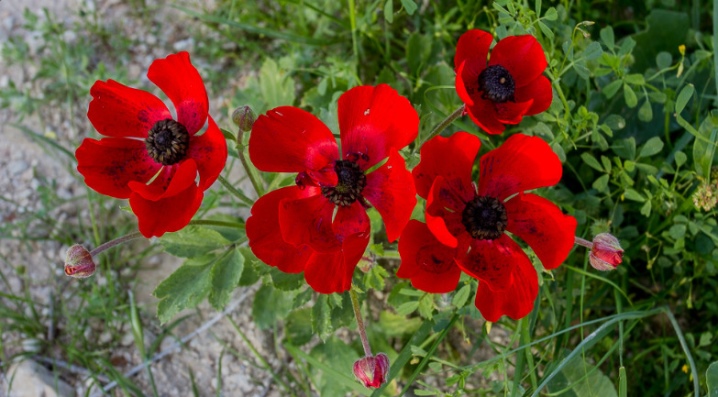
- peony differ in large, about 10 cm, terry inflorescences.
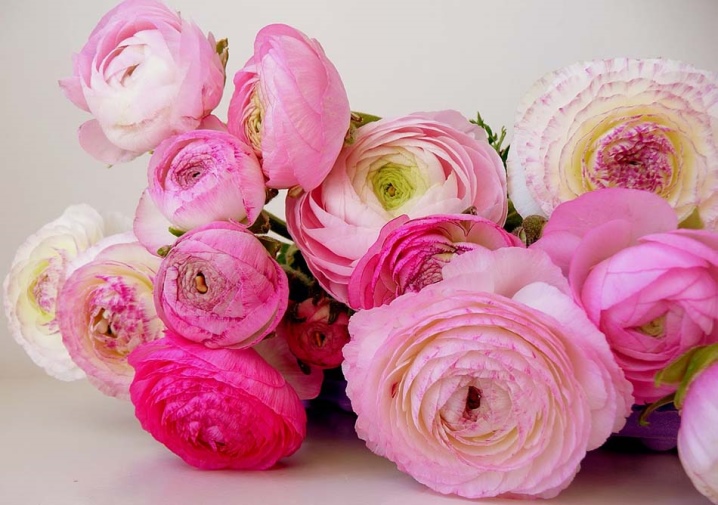
There are quite a few varieties of garden buttercup, both wild and cultivated. Among the most famous and common varieties of ranunculus, the following can be distinguished:
Bloomingdale Orange Bicolor in height it can reach 30 cm, with large inflorescences (about 9 cm in diameter), which are orange in color with a reddish border, the variety is distinguished by a rather long flowering;

- "Bloomingdale blue bicolor" does not exceed 25 cm, has white buds with a dark pink border, prefers areas with nutritious soil;

"Bloomingale rose bicolor" has a very beautiful color: white terry inflorescences are decorated with pink edging;
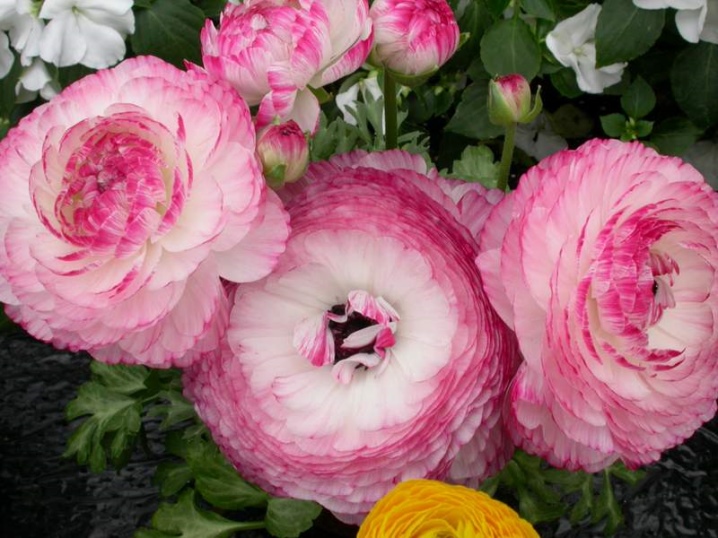
- Red it is distinguished by an exquisite burgundy color of the buds, which are often used to decorate bouquets, the shoots are long, up to 40 cm, the variety blooms at the end of July;
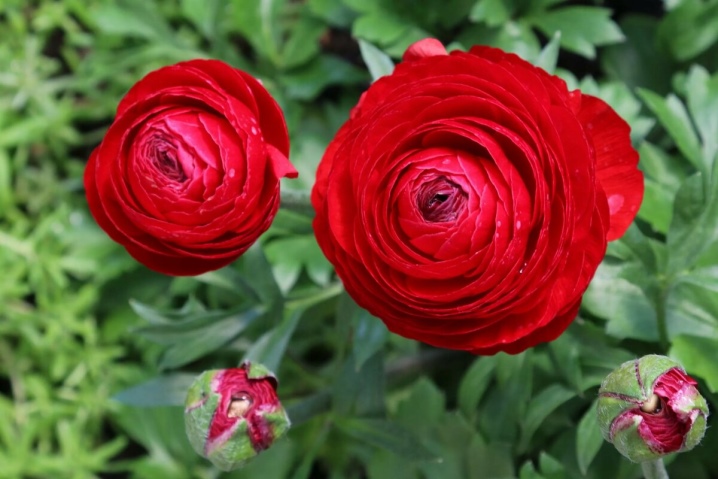
- "Pikoti" has several varieties, in which the edges of the petals have a color that is very different from the main color, the shape of the flowers is similar to semi-blooming peonies;
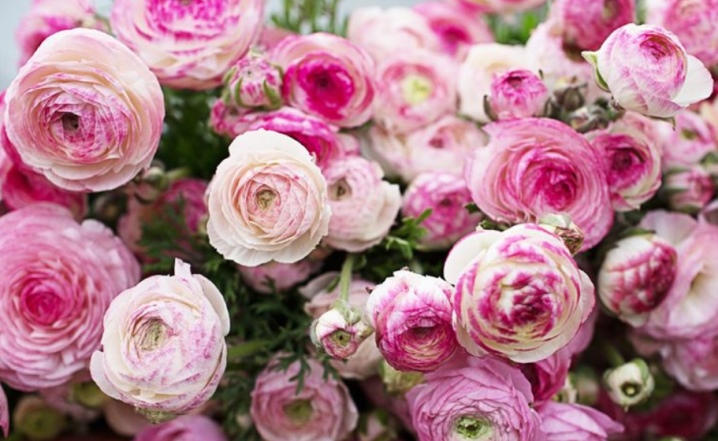
"Purple Pikoti" - a beautiful hybrid of the previous variety, has white buds with a light purple-lilac dusting on the edges of the petals;
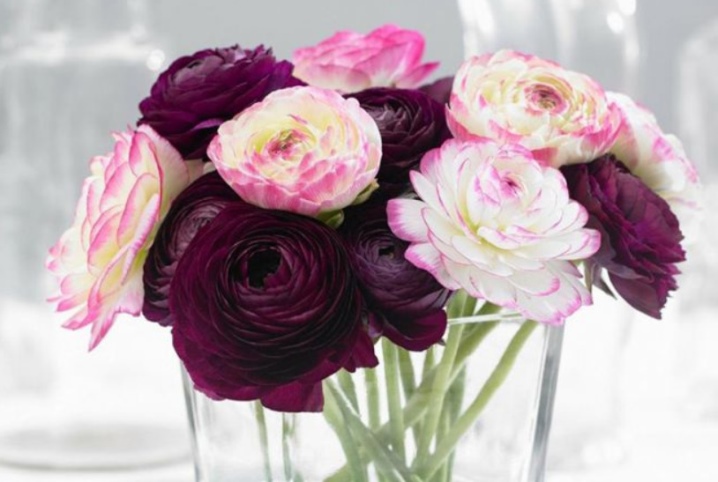
"Double Pink Buttercup" - a hybrid with densely doubled buds, pink petals are numerous and tight-fitting;

- "Elegant" has a variety of colors of inflorescences, but the most spectacular are flowers with white petals having a burgundy top or yellow-lemon buds with purple stains along the edges;
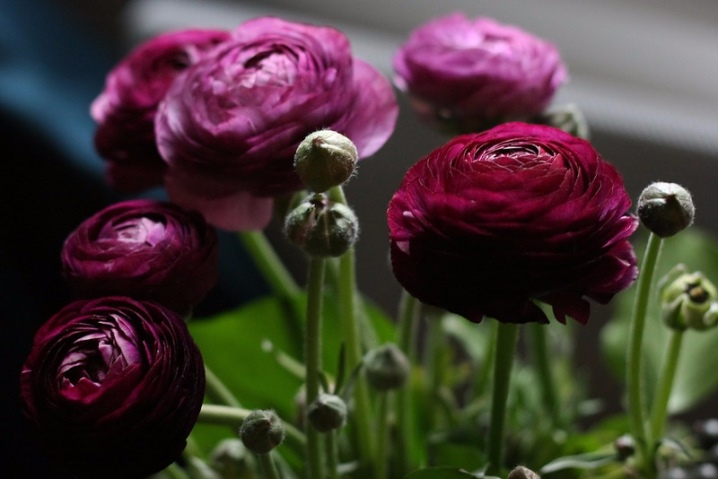
- "The festival" it is distinguished by numerous, densely folded petals with a contrasting center of green color, the color of the buds can be different: pink, cream, lemon or white;
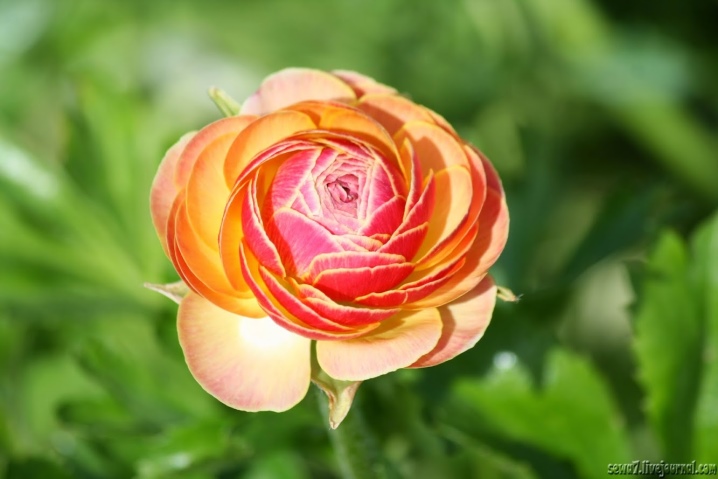
"Pon-pon" has inflorescences that resemble lush pom-poms in appearance, which stand out in beautiful mixed colors: red with light green, snow-white with delicate purple transitions;

"Carousel" differs in the different color of the buds, in which the core has a green color, the variety propagates exclusively by seeds, since no shoots are formed on the rhizome;

"Success" is a variety that is very resistant to diseases, and is characterized by a rather long flowering period, large buds have different colors;
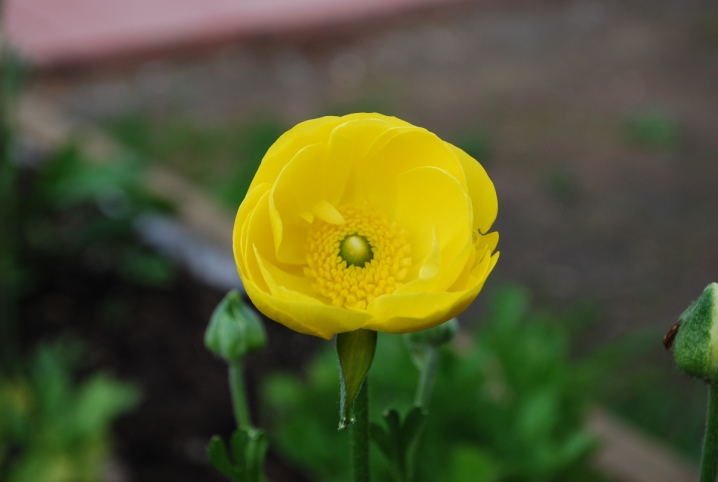
- "Flamenco" it stands out for the unusual appearance of the buds: the yellow petals have a bright red border;
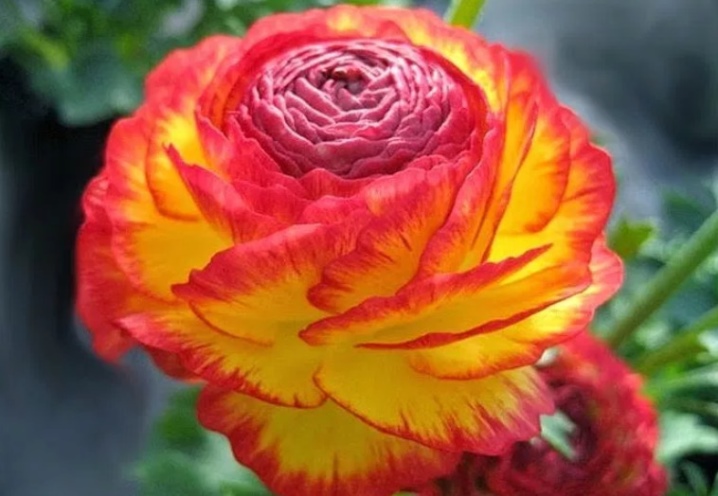
- "Andrea" it has dense spherical double inflorescences about 8 cm in diameter, the flowers are bright in color and serve as a real decoration of the flower bed;
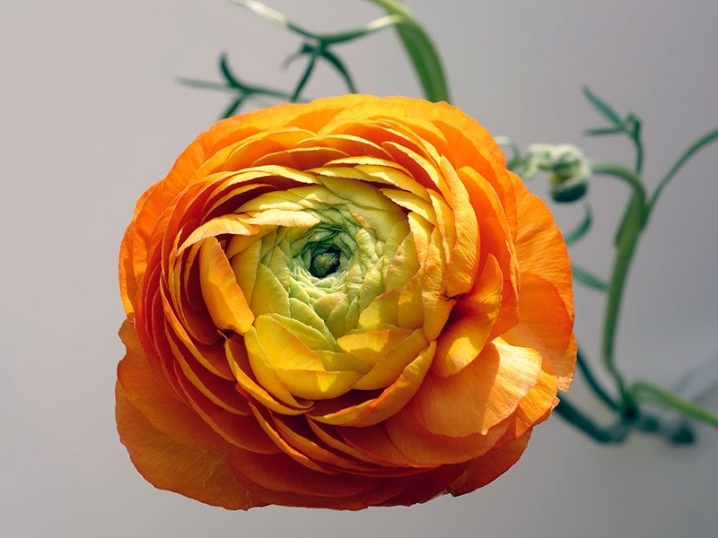
- "Victoria" does not differ in height (up to 30 cm), small buds are painted in bright yellow, in shape they are very similar to roses;

- "Blooming Valley" with large bright red double-type flowers, reminiscent of rose bushes, prefers areas with light shade for growing;
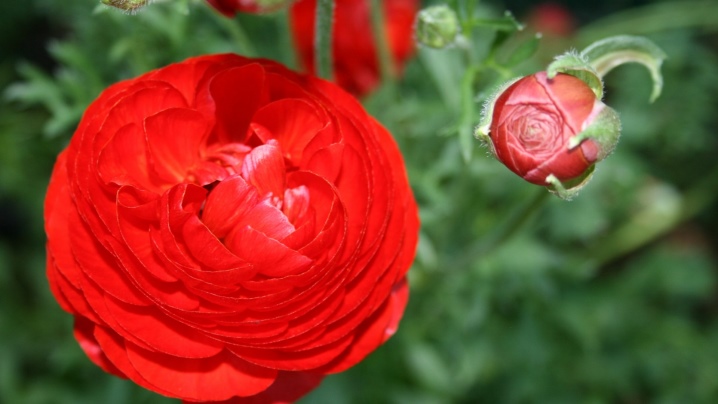
- Yellow it stands out with rather large lemon-yellow buds that look like balls.
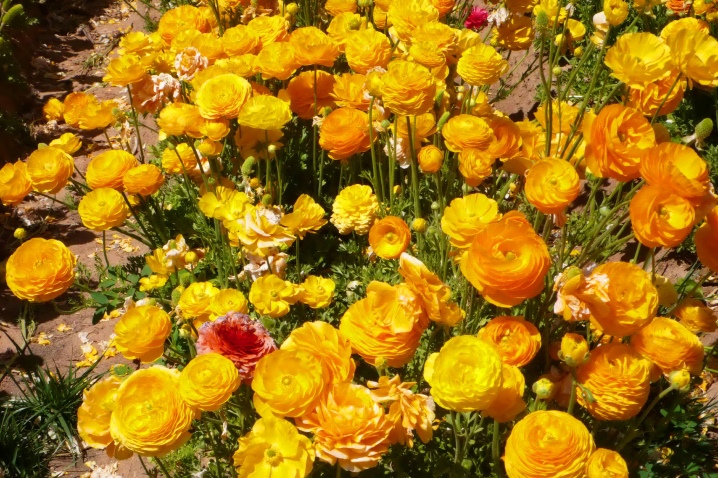
Often, flower growers prefer to plant buttercup mix, because in one sowing you can grow a bright multi-colored meadow of flowers.
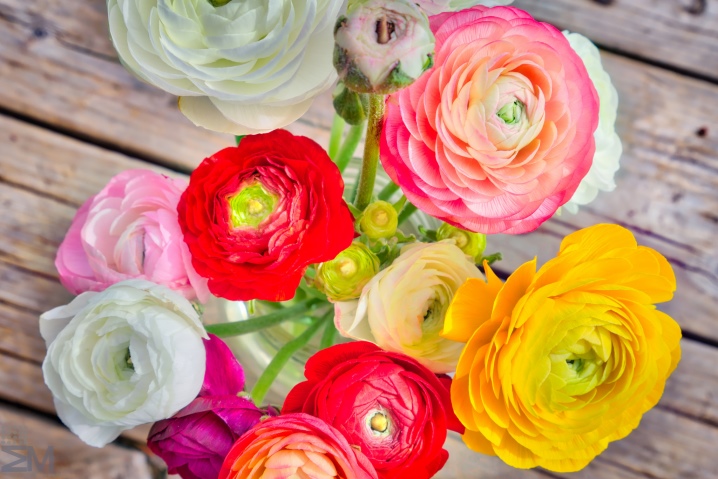
How to plant?
Most ranunculus varieties prefer areas with good lighting, but protected from direct sunlight and gusts of wind. Although many growers claim that buttercups grow normally on wind-blown areas. Too bright lighting will prevent the seeds from setting, and also prevent the shrubs from blooming for a long time. It is worth planting buttercups in the garden or on a flower bed in the spring.
The soil should be well-drained and fertile, as well as enriched with humus; in terms of acidity, weakly acidic or neutral is optimal.
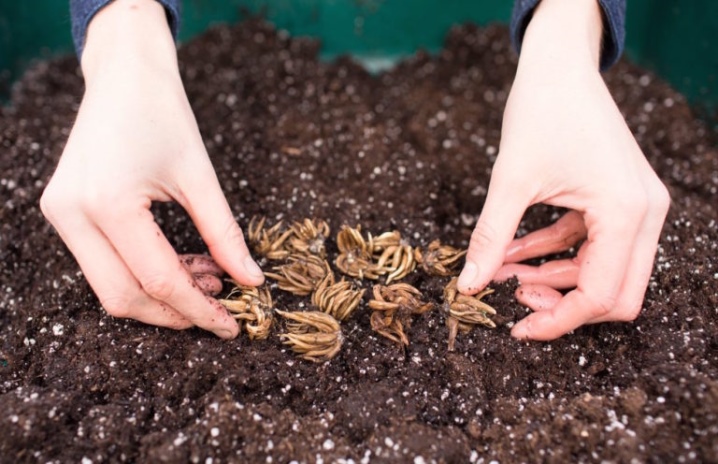
The soil that does not dry out is more suitable for the plant, so a site with surface groundwater would be an ideal place, but high-quality drainage should be a prerequisite. It is preferable to plant ranunculus in groups, with such a planting they have a more decorative appearance. The earth for them is dug up in the fall, fertilized with manure and flavored with compost. Buttercup tubers or seedlings are planted from the second half of April to the end of May, when the soil warms up well enough.
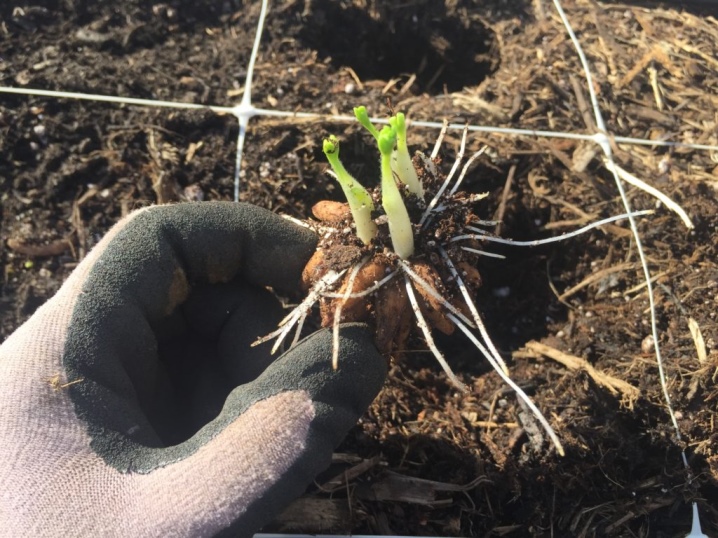
Planting a plant is carried out as follows:
dig small holes (if the soil is heavy, they are made 3-5 cm deep, and if light, then 6-8 cm);
the distance between them should be 10-15 cm;
at the bottom it is worth pouring a drainage layer of sand and expanded clay;
plants are placed in the pits and covered with earth, tamped and watered on top;
the tubers are placed in the holes with the roots down.

It is recommended to apply a layer of mulch after planting. When planting seedlings, the bushes will bloom only for the next season.
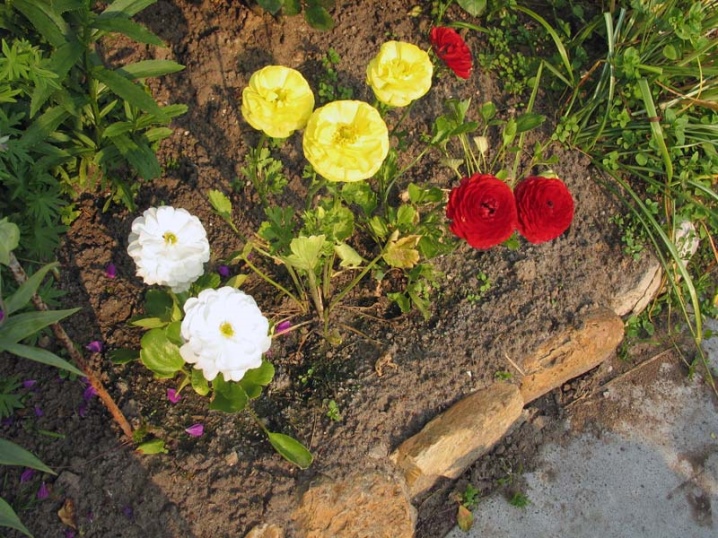
How to take care of it properly?
For a lush and long-lasting flowering, the ranunculus needs to create certain conditions.
Watering
Buttercups are quite demanding on moisture: they do not like both excessive moisture and drought. The condition of the soil must be monitored - it should not dry out. Flowers are watered when the top layer of the soil dries up, but it does not need to be moistened much so that the roots do not start to rot. As protection against excessive watering, you can lay drainage from pebbles or expanded clay into the planting pits. After the end of flowering, the number of watering should be reduced, since buttercups are preparing for the dormant period and they do not need additional nutrition.
When the leaves on the bushes turn yellow, watering is stopped.
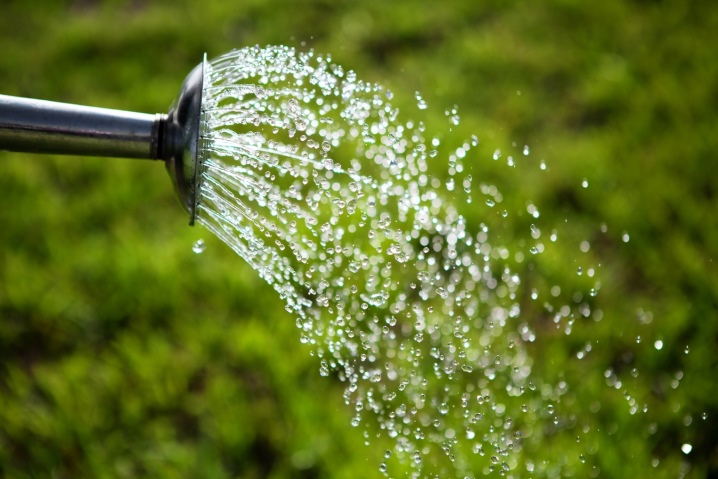
Top dressing
Throughout the growing season, buttercups need additional nutrition. Fertilizers are used organic or complex and they are applied approximately once every 10-14 days. During the formation and growth of leaf plates, it is worth using nitrogen-containing dressings., and when flowers begin to appear, you need to fertilize the culture with a mullein or fertilizers on a phosphorus-potassium basis.

Weeding and loosening
The soil around the buttercups must often be loosened and weeds must be removed, which take away nutrients and moisture from the plant. To reduce their growth, it is worth mulching the bushes with dry grass.
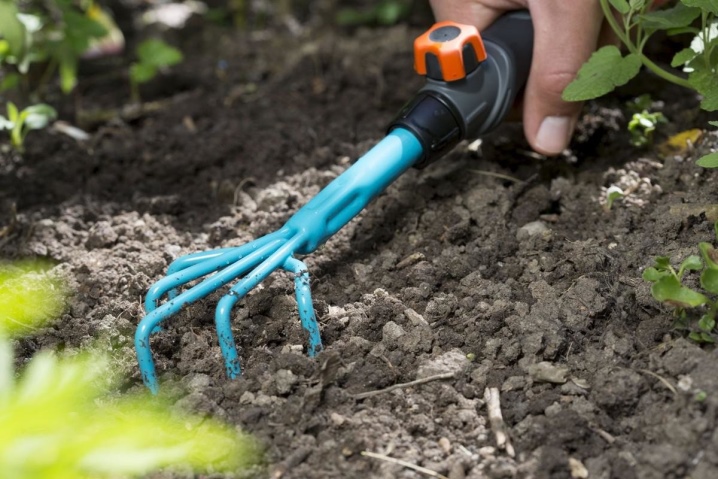
Pruning
For long-term flowering of ranunculus, it is necessary to remove dried shoots from it without fail. In addition, pruning will give the plant a more aesthetic appearance, and it will bloom until August. During the entire growth period, it is also necessary to remove dried foliage, buds that have faded and damaged parts. At the beginning of autumn, after the death of the peduncles, they are cut off completely.
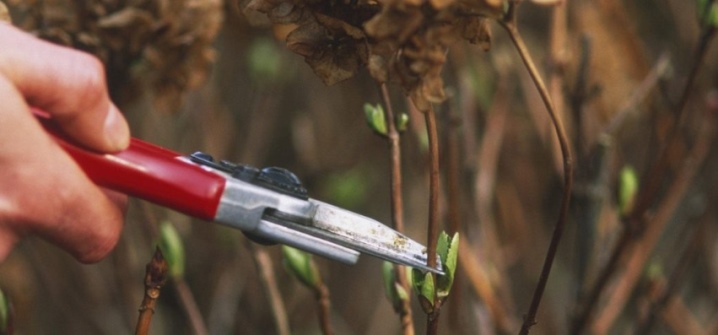
Preparing for winter
Asiatic buttercup is not frost-resistant, for this reason the rhizomes of plants are dug up for the winter. This is done in late summer and early autumn, when the ground part turns yellow and withers away. If the procedure is not carried out on time, the rhizome can begin to germinate during the autumn rains.
When working with buttercup roots, remember that they are very fragile, so you need to handle them with extreme care. They are carefully washed, too overgrown are separated.
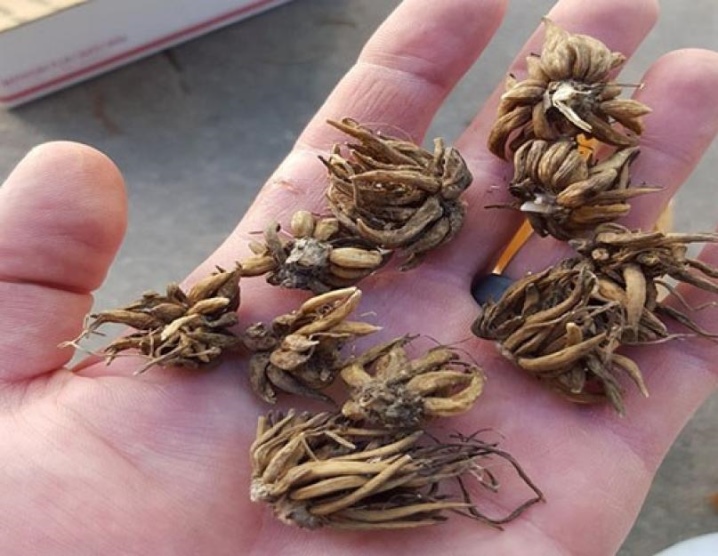
Then the tubers are washed with fungicides or potassium permanganate and dried, stored in sawdust, peat or sand in a dry room at a temperature of + 4-6 ° C. Another method can be used to store ranunculus tubers. The rhizome is dried for about three weeks and stored in a room with good ventilation and a temperature of 17-20 ° C. Keep the roots in boxes or paper bags. Tubers are well stored for a year, retaining all qualities (in both cases of storage).
It is imperative to look at the rhizomes at least once a month in order to prevent possible diseases in time and prevent their spread.
When infected with rot or mold, diseased rhizomes are removed, and if the affected area is small, then treated with brilliant green or colloidal sulfur.
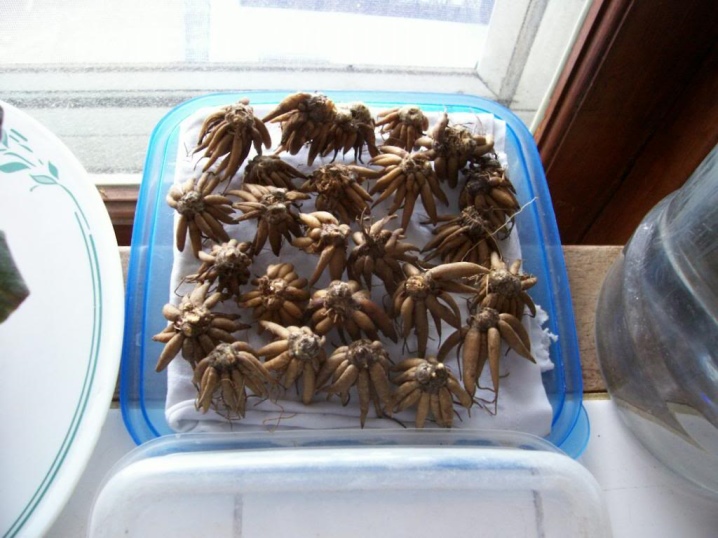
Reproduction methods
Grow a garden buttercup two ways:
seeds;
rhizome.
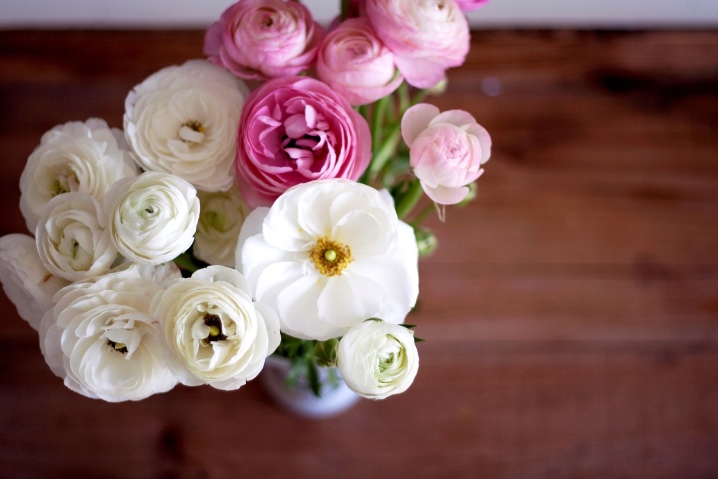
Seed reproduction is a rather troublesome and not always a good option., because the seeds have a relatively low germination capacity. They are harvested in August-September or purchased in a store, and sown for seedlings at the end of February or in March.
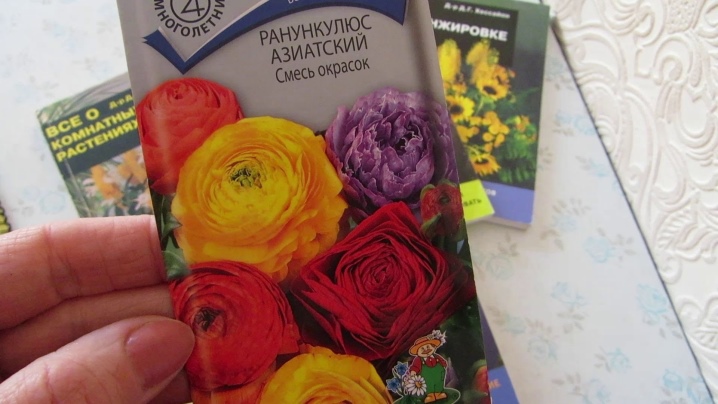
The procedure is carried out as follows:
a container or box is filled with leaf and turf soil in equal proportions, a little humus is added to it;
seeds are placed in rows with a distance of 1-2 cm, 8 cm are left between the rows;
sprinkle them with a small amount of earth and moisten them with a spray bottle;
the container is placed in a well-lit place, covered with film or glass (condensation must be removed every day).

On average, seedlings hatch after 2 weeks. The shelter should be periodically removed to allow the sprouts to air, and when they get a little stronger, you can remove it altogether. In the first 10 days, it is worth adhering to the temperature regime of + 10 ° С, and then + 18-20 ° С is enough. The sprouts also need bright lighting; if there is a lack of sunlight, it is worth equipping a place supplemented with lamps. In early May, grown seedlings are planted in a greenhouse for growing.
During the summer, young plants will form good tubers, and some bushes may even set buds.
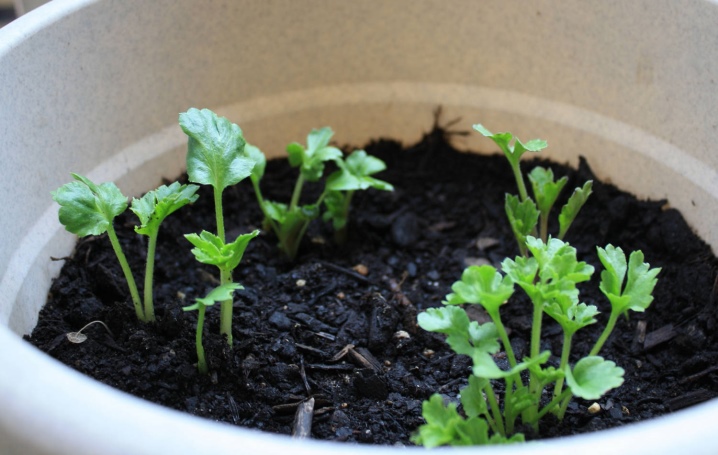
Reproduction by tubers is as follows:
they are planted in open soil around mid-May, when the air and earth warm up enough;
rhizomes are soaked for 12 hours in potassium permanganate, growth stimulants or water;
planted in shallow holes with the roots down.
After just two weeks, sprouts begin to appear.
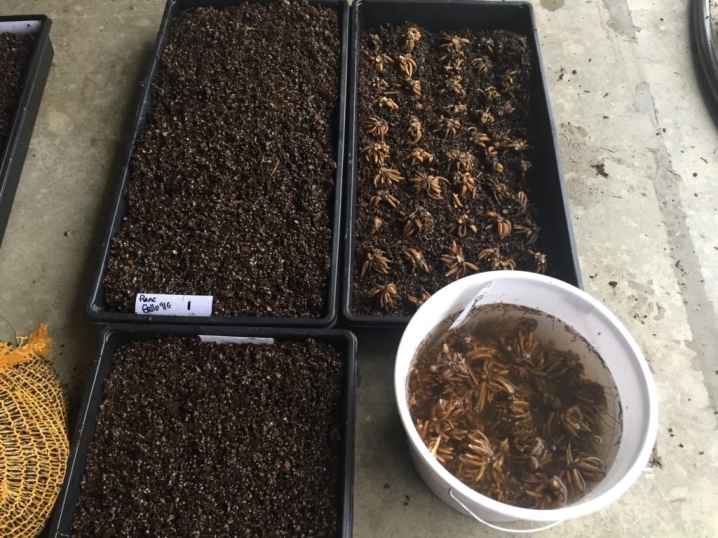
Diseases and pests
Buttercups are quite resistant to both disease and insect attack. Most often, the plant suffers from excessive moisture, which manifests itself in the form of root rot or mold on the leaves. To avoid this, it is imperative to use drainage when planting, as well as monitor the amount and volume of irrigation. If the trouble nevertheless happened, the affected parts are removed, and the plant is treated with fungicides. Due to the high humidity, buttercups can get sick with powdery mildew, a fungal disease.
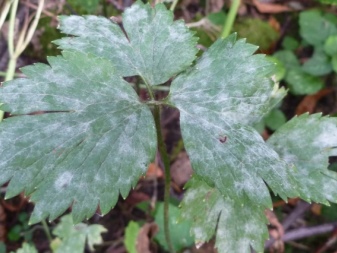
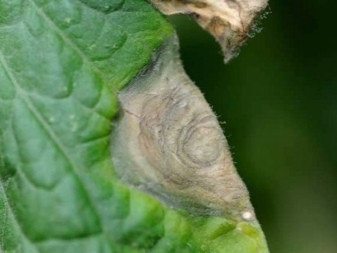
Treatment consists in treatment with fungicidal preparations "Fitosporin" or "Quadris". For preventive purposes, it is worth using potash dressings. Of the pests, ranunculus can damage cabbage butterflies. The fight against them consists in the use of insecticides. Also, flowers are attacked by pests such as nematodes and spider mites.
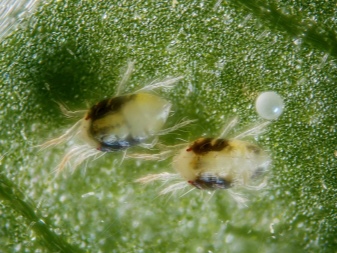
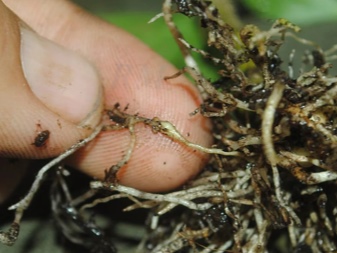
Nematodes can be found in the form of leaf plates twisted into a tube. The roots of the plant should be treated with potassium permanganate, and if the lesion is extensive, the diseased buttercup is removed. Spider mites (whitish or light yellow spots appear on the leaves) are disposed of with the help of insecticidal preparations.
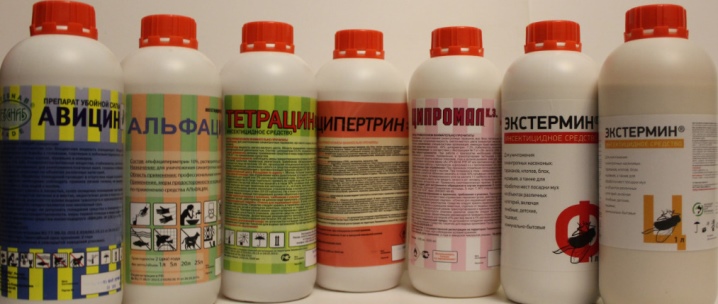
Garden buttercups, with proper care, will decorate any flower bed or garden with numerous inflorescences and bring a bright note of comfort to gray everyday life.
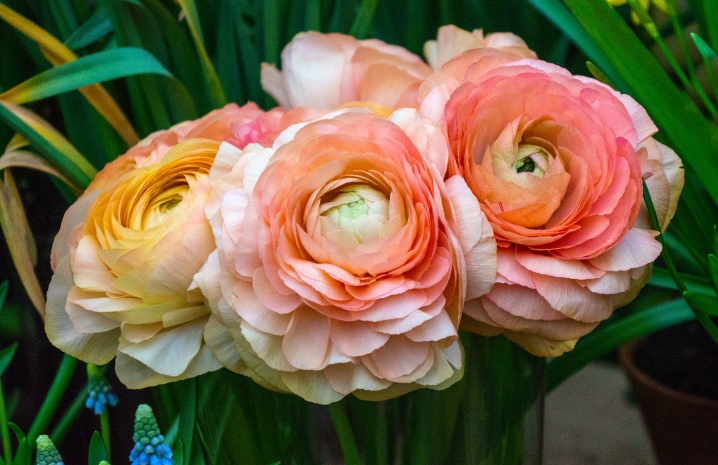
In the next video, you can watch the process of planting buttercup tubers.







































































































Thanks! Everything is clear and understandable.
The comment was sent successfully.